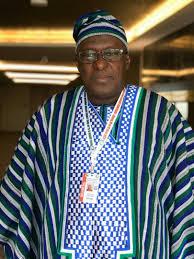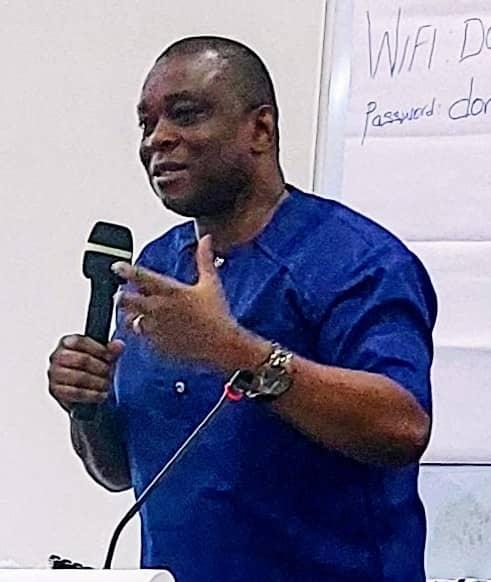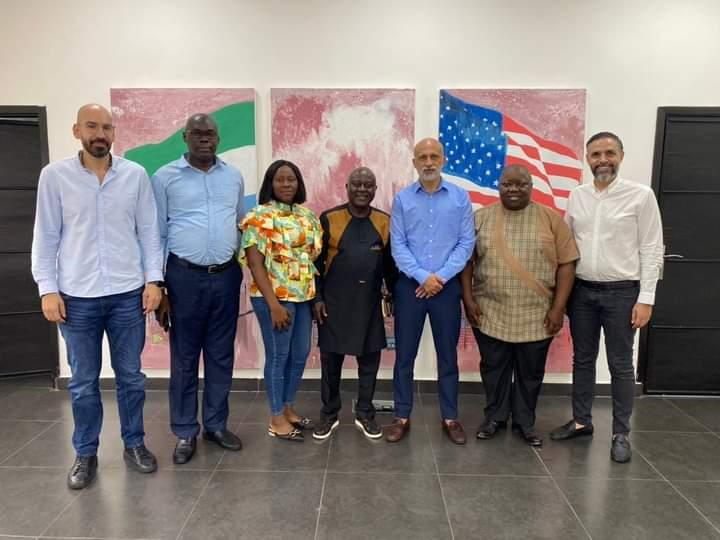How realistic is the de-amalgamation of chiefdoms?
It seems like the new Minister of Local Government and Rural Development Mr. Maya Moiwo Kaikai wants to set precedence by severing the colonial umbilical cord with his call for the de-amalgamation of chiefdoms during his recent meeting with paramount chiefs in the country.
Reports are that the objective of the de-amalgamation is to restore some of the chiefdom boundaries that had been obliterated or wiped out completely from colonial administration.
Explaining the background for the amalgamation of certain chiefdoms, the Local Government Minister said there were about 216 chiefdoms in the country during the colonial period but under the guise of administrative continence, the 216 chiefdoms were forcibly amalgamated into 149 chiefdoms. Mr. Maya Moiwo Kaikai believes that the forcible amalgamation has proven to be a continuous source of conflicts and disunity. Hs solution, therefore, is the need for the re-amalgamation of the country’s 149 chiefdom boundaries with the aim of restoring the colonial days’ chiefdom boundaries.
The Colonial Situation
Mr. Maya Moiwa Kaikai’s call for the de-amalgamation of the 146 existing chiefdoms so that the country would restore the 216 chiefdoms that existed during the colonial era sounds novel because none of his predecessors in that Ministry had ever thought of the idea from post-independent era. But the possibility of the Minister transforming that idea into reality is predicated on the cultural impact of colonialism.
According to the book titled ‘Cultural Policy in Sierra Leone’ authored by the Sierra Leonean historian Dr. Arthur Abraham, “With the imposition of colonial rule, a foreign superstructural entity, culturally different and alien, was superimposed upon the colonized society. A plural society was then created, characterized by the antagonistic relationship between the foreign rulers and the indigenous subjects, who mingled but did not mix.”
The author states: “The dominating society, representing a technologically advanced society, infused elements that affected the pattern of change. Indigenous sovereignty was lost, and the rulers were made adjuncts of the colonial administrative mechanism.
“All indigenous rulers robbed of their sovereignty were styled ‘paramount chiefs,’ with many of their powers and functions abrogated by the colonial power. Larger territories were then fragmented and rivalries generated.”
One of the cultural impacts of colonialism was the undermining of state organization in the Sierra Leone hinterland. Under the state organization, there is a striking similarity in the political organization and administrative structure of the polities that developed in the Sierra Leone hinterland. These were roughly polities of a federal kind with a titled suzerain – a person who had power over many people – who was elected to the office for his prowess by a consensus of the elders and strangers were not known to be excluded from the contest. In theory, the king had absolute powers, but in practice, he was kept in check by his council of state (which meant only occasionally), his court council which resided in his capital town, and by powerful sanctions and rituals imposed by institutions known as secret societies.
The state was divided into a number of provinces, each ruled by a chief, who was usually descended from the founder of the nuclear settlement. Although responsible to the king, he carried out the day-to-day administration of his province, including the administration of justice, without interference. He was obliged, however, to pay annual tribute to the king, provide warriors during an emergency, and in necessary circumstances pay extra levies. Appeals from his decisions were heard directly by the King’s court. The provincial chief also had his own council, which he consulted on all important matters.
Below the provincial chiefs were town and village chiefs, who were usually the oldest surviving members of the family that founded the town or village. They carried out much the same functions as the provincial chiefs.
The council state usually comprised the court officials, provincial heads, eminent warriors and learned men. Owning to difficulties in communications and other reasons, this council met irregularity. The king took immediate advice from his court officials, who in most cases had specific functions and titles, as in a modern cabinet.
But with the advent of colonialism, two contradictions arose, within the new colonial chieftaincy and within the colonial administration itself. The chief got his ultimate support from the colonial power, not from his people. If he represented some unpopular wishes of the administration to his people, he risked a revolt. If he failed to carry out an order, he faced likely deposition. On the other hand, the colonial administration took over as the ultimate king-makers and at the same time as the protector of the people against their chiefs. As long as the chief retained the support of the administration, he could safely keep his office. A chief could suppress his people as long as he had the support of the colonial administration, but the latter too had the new function of protecting the subjects against the oppression of their chiefs.
But based on new evidence emerging, some paradoxically from the colonial records themselves, historians now know that the pre-colonial people organized themselves into larger polities, each of which comprised several provinces, called chiefdoms in the colonial period. Each of these chiefdoms belonged to a larger political organization in the pre-colonial period.
With the advent of Western education, traditional methods of education and medicine were discouraged and the missionaries created new elite whom they taught to despise their brethren, customs, institution and history. The new elite then despised its own culture and aped the ways of life of the foreign colonizer. New symbols of elitism emerged – in this case, the English language, English dress (jacket and tie) despite the humidity and the burning tropical sun, English food, music, etc.
Members of this elite class looked to London for their values, aspired to the positions of the colonizing class and were almost completely alienated. At a certain point, some time about the Second World War, they claimed to speak for their ‘backward’ brethren under the guise of ‘nationalists,’ and preached that they must be the legitimate successors of the colonial masters. Some gained the consciousness that they were Africans, and therefore could never become Europeans, however religiously they aped European ways. But most African elites have continued to see themselves as superior to their kindred, and continued to behave as such. The educated man traditionally becomes alienated from his own people. Most therefore stay in no-man’s land, neither European nor completely African.
At independence, the outgoing colonial masters abdicated power to this alienated class, which has failed to sever the colonial umbilical cord by maintaining the administrative system and consumption patterns inherited from their colonial masters.
Since post-independence era, successive administrations in Sierra Leone had been following the administrative system they inherited from the colonial masters. No effort had ever been made by any administration to consider the de-amalgamation of the 216 chiefdoms that were amalgamated into 149 chiefdom by the colonial administration until now, when the young and dynamic Minister of Local Government and Rural Development has called for it, which to me sounds novel.
However, I am very curious to know whether it is necessary to de-amalgamate the existing 149 chiefdoms when our politicians that succeeded the colonial masters have been and are still taking advantage of the colonial chieftaincy and the colonial administration they inherited from the colonial masters?
Under the colonial chieftaincy, for example, the chiefs got their ultimate power from the colonial power, not from his people. The chief was also expected to represent popular wishes of the colonial administration to his people or risked a revolt. And if the chief failed to carry out an order, he would face likely deposition. The colonial masters also took over as the ultimate king-makers and at the same time as the protector of the people against their chiefs. As long as the chief retained the support of the administration, he could safely keep his office. A chief could suppress his people as long as he had the support of the colonial administration….
By and large, the two contradictories that arose during the new colonial chieftaincy as mentioned in the above paragraph are still alive and kicking and successive Governments are using them to their advantage. For example, not only did the late President Siaka Probyn Stevens depose paramount chefs for failing to carry out his orders, he also protected many of them and even ensured that some of his lieutenants from non-ruling homes were crowned paramount chiefs, such as Chief Goba of Mattru Jong Chiefdom in the Bonthe District. Even under the Koroma administration, we have witnessed the deposition of Chief Shebora Somanoh Kapen II of Mambolo Chiefdom for political reasons, who is now the National Chairman and Leader of the main opposition Sierra Leone People’s Party (SLPP).
In my humble opinion, even if the existing 149 chiefdoms are de-amalgamated into 216 chiefdoms, it would only give birth to more paramount chiefs rather than deviating from the colonial chieftaincy which seems very comfortable for any Government in power. And just as the colonial masters robbed the indigenous rulers of their sovereignty with many of their powers and functions abrogated by them, so will our Government and future Governments continue robbing them of the sovereignty they enjoyed prior to the advent of colonialism.
In fact, the post-independence administrations went further to politicize the institution of chieftaincy with impunity. For instance, we have Paramount Chief Parliamentary Representatives from the twelve provincial districts representing their colleagues in Parliament. It is only now that paramount chiefs have suggested the creation of their own council or house to the Constitutional Review Committee (CRC). On the contrary, no paramount chief sat in the Legislative Council or Executive Council during the colonial era.
Moreover, to de-amalgamate the existing 149 chiefdoms into 216 chiefdoms could be another huge financial burden on Government and perhaps our development partners especially when the implementation of the post-Ebola recovery programme is the most prioritized area which Government should be paying greater attention to.
The process may also generate more conflicts and disunity than expected because the chiefdom boundaries that had been obligated from the nineteenth centuries would be very difficult to identify given the lack of comprehensive documents on how these boundaries were demarcated. Mr. Maya Moiwo Kaikai’s call for the de-amalgamation of the 149 chiefdoms into the original 216 chiefdoms could be a move to sever the colonial umbilical cord, but it stands to reason that Government maintains the existing chiefdoms and relishes in the colonial chieftaincy that is working in its favour. In other words, Government should carefully give a second though to his brilliant idea of de-amalgamation lest they regret taking a wrong decision that could plunge this country into intra- and inter-chiefdom conflicts and disunity.
Stay with Sierra Express Media, for your trusted place in news!
© 2016, https:. All rights reserved.






